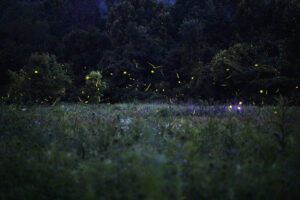Reflecting on the subject of pain in his Philosophical Investigations, Wittgenstein concluded that the grammar of the concept had an essential relation to publicly recognisable forms of “pain-behaviour”: wincing, saying “ow”, yelping, crying, and so on. He thought that it was possible to know that another person was in pain simply by looking at their behaviour, as reliably as you could know that you yourself were. “Just try — in a real case — to doubt someone else’s fear or pain,” he wrote, doubtless fuelled by memories of serving as a forward artillery observer in the First World War. He’s probably right. Still, it’s a pity he never met American ultra-runner Courtney Dauwalter.
On Saturday, Dauwalter won the women’s Ultra-Trail du Mont-Blanc, a 106-mile race around Mont Blanc involving a total of 32,700ft of climb plus accompanying brutal descents. In the past 10 years this astonishing athlete has won 20 ultra marathons, the shortest of which was 100km and the longest 240 miles. In the past 10 weeks alone, she has won three races of 100 miles each, with little time for recovery in between. The UTMB was her latest; she completed it in under 24 hours. In an interview the day afterwards, she pronounced her legs “completely destroyed”, and I believe her.
During her youth, Dauwalter honed her tolerance to suffering by competing in cross-country skiing in Alaska, putting duct-tape on her face to avoid getting frostbite. In races these days, past a certain point of exertion she tends to vomit every couple of miles. According to one extended profile of the runner, if she’s competing for more than 24 hours, now and again she will permit herself a one-minute power nap at the side of the trail. She often hallucinates: for instance, that bears are hugging in a circle in front of her, or that flying eels are attacking her. Hallucinations have now become part of her brand: she has a merchandise line that makes graphics out of them and puts them on T-shirts.
During one long race, she refused to change her running gait despite a huge blister migrating from her little toe to the top of her foot. In another, she developed temporary blindness but still ran on. Tripping on a tree root, and unable to see the blood leaking from her face after the fall, she dismissed it as “just sweat”. As her husband said in a documentary about her: “Something that Courtney has learnt and has got really good at, is that when you think your body is telling you to stop, maybe you don’t need to stop”.
Of course, sometimes when your body is telling you to stop, it’s a good idea to listen. My own version of this is to take a breather halfway up a local hill to enjoy the view. Dauwalter’s version is to attempt a 486-mile course record across the Rockies, stopping only for acute bronchitis at mile number 309. It’s not that she doesn’t feel pain at all. It’s rather that she mentally approaches it in a very deliberate way, originally learnt from her high school skiing coach.
To cope, she visualises in great detail a “pain cave”: a dark underground space full of tunnels, whose outer edges she pictures herself chiselling away at with every agonising step. In classically puritan vein, she tells herself at the beginning at every race that she is about to step into the cave and that “we’re going to get better from visiting it”. Early on in her career, she used to picture herself shying away from the cave’s mouth; or else sitting on a chair near the entrance, just “surviving it”. Nowadays, pain and the mental chiselling it prompts are conceived of as industrious and productive: “Each time I’ve raced, and hurt a little more, and dug a little deeper, I’m actually making a bigger cave with different tunnels.” She imagines herself in a hard-hat “going to town, trying to make it a dust pile while I am in there”.
The Stoic philosopher Marcus Aurelius might have urged us not to struggle against pain but to accept it as neither good nor bad. This runner-philosopher goes one better, advising us to give pain a meaning, then love it. Reading about Dauwalter this week — and having just finished my own bout of bronchitis — I decided to try out her technique by going for a run.
After about three minutes of heaving myself up the road, I mentally donned a high-vis vest and headlamp and tentatively entered my cave. Staring blankly about me, I ineffectively chiselled a bit here and there, but soon got distracted by the dragging pain in my legs and hammering in my chest. As my discomfort increased, I made some more desultory marks on the walls — for some reason, these looked a bit like the scratches made by the victims of serial killers — and then put down my tools and lit an imaginary fag. I don’t think I have the right work ethic for this job. Personally, I see nothing wrong with a pain cave on the snug side.
Womanhood and pain is a naturally occurring combination. The pains of childbirth for most, menstrual pain for nearly all, and fluctuating hormones which increase the intensity of already painful conditions are the female lot without access to medication. Women report pain more frequently than men and are more susceptible to chronic pain conditions, for complex reasons that are probably both biological and social. Some studies even suggest that female pain intensity is higher too. Women also apparently buy the most over-the-counter analgesics — though it remains unclear whether some of these are purchased for their husbands.
There are also sexed differences in dealing with pain. One overview suggests that while men distract themselves with other tasks and use “problem-focused tactics”, women tend to try “positive self-statements and emotion-focused techniques”. Indeed, I can attest to this, having once done a hypnobirthing course, full of 30 and 40-something expectant mothers trying very hard to convince themselves they weren’t going to have a caesarean at the end of it. Here, too, there was a geological visualisation — except this time it was called the “cove of confidence”, and you were supposed to retreat into its soothing depths whenever you needed a break from the agony of what the instructor euphemistically renamed as “surges”. (Without wanting to discourage any pregnant readers, let’s just say that, at the very least, the cove of confidence empowers you to scream all the louder for an epidural during the surges).
Women are also apparently more prone to what psychologists “pain catastrophising” — worrying and ruminating excessively, mentally magnifying threats and anticipating the worst, feeling helpless, and so on — which in turn exacerbates pain intensity and general distress. This degree of anxiety starts seeming more rational when supplemented with the knowledge that, when women go to the doctor, their pain apparently tends to be underestimated relative to identical behavioural manifestations by men (yet another data point unanticipated by Wittgenstein).
Indeed, there’s a danger that simply stating in public that women experience more pain than men partly due to biological factors — as I am doing here — might encourage a dismissive attitude towards women’s pain by health care providers. That is, this knowledge might induce hearers to confuse what is the case naturally, with what ought to be the case, producing a knock-on social penalty as well. Yet if the modern-day medical attitude to “natural” pain is that it should be medicated away — and clearly it is — then there’s no fair reason to extend this attitude to one sex but not the other.
But maybe we don’t always have to opt for anaesthesia. With pain an inevitability in life, and particularly for women, it makes sense that some people make it part of an identity. Choose pain deliberately before it chooses you! Contrary to appearances, this is not always the same as masochism. Masochism, whether sexual or emotional, involves unconsciously leaning into passivity, helplessness, victimisation, and the familiarity of suffering. This seems to me the precise opposite of what someone like Dauwalter is doing. She is emphatically winning at life, not stagnating in the comforts of defeat. She has no coach, follows no set training regime but just runs how she feels on the day, and rewards herself afterwards with nachos and beer. According to one journalist: “Sometimes around 3 a.m., she is so amped, in awe of the mountains surrounding her, that she’ll squeal: “This is awesome!” Even controlling for being an American (or, at least, not being British), this still sounds pretty far from the masochistic mindset.
Indeed, one common explanation sometimes offered for masochism positions it as a negative response to a highly competitive environment — you revel in feelings of pain, failure, and inferiority as an inadequate psychic proxy for power and control. Dauwalter, in contrast, seems obviously in touch with her inner competitive beast, and approaches every race with explicitly positive goals in mind. Pain is conceptualised as a necessary means to the ends of beating rivals, smashing course records and personal bests, and — of course — winning that coveted first place in the “World’s Most Voluminous Pain Cave” competition. “My goal with every race is to make it hurt and get everything out of myself that I can,” she says.
Hardly any of us can be as positive as this about what is essentially an unpleasant experience, and in some cases overwhelmingly so. Pain hurts, sometimes terribly. The clue is in the concept. Still, in a world where so many of us seem to be keen to escape pain in all its forms, whether physical or emotional, Dauwalter serves as a fascinating exemplar of how it is possible to go the other way, and rush towards it, grinning ecstatically.
Disclaimer
Some of the posts we share are controversial and we do not necessarily agree with them in the whole extend. Sometimes we agree with the content or part of it but we do not agree with the narration or language. Nevertheless we find them somehow interesting, valuable and/or informative or we share them, because we strongly believe in freedom of speech, free press and journalism. We strongly encourage you to have a critical approach to all the content, do your own research and analysis to build your own opinion.
We would be glad to have your feedback.
Source: UnHerd Read the original article here: https://unherd.com/





